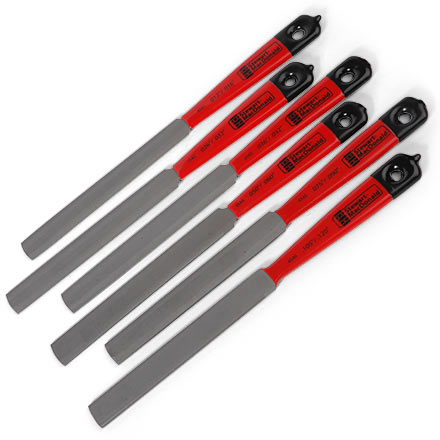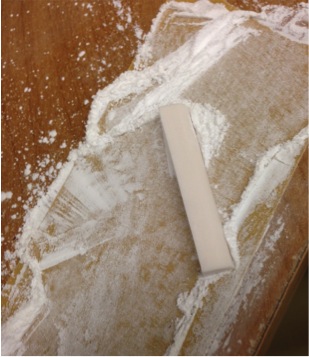One of the most commonly overlooked problems in a guitar set-up also happens to be one of the most important pieces to get right! As one of only two resting points for each string on your guitar, the nut carries quite a burden. If you find it way too hard to hold down an F chord, if your strings buzz when played open, if your strings “catch” while tuning, or your guitar’s intonation just doesn’t seem right, your nut may be at fault. Sometimes it’s too far gone, and in many cases the best course of action is to have a new nut custom-made to fit your guitar. That said, steps can be made to correct problems with an existing nut to help make the guitar play the way it should. Below is a guide to doing just that!
Before you begin, you’re going to need to invest in some tools. For our purposes here, you’ll need the following:
– Nut Files (properly sized)
– Sand Paper
– Super Glue
– Second Nut (a piece of one will do)
– Masking Tape
The most important thing to do before you start any sort of nut work is to ensure that the guitar neck is straight as an arrow, with the strings tuned to pitch. If you cut deeper slots into a nut while the neck is bowed, and straighten the neck after, then your strings might end up sitting too close to the frets and cause fret buzz. On the flip-side, if your neck is back-bowed and you raise the slots, the strings may sit too high once the neck is correctly adjusted. Always start with a blank canvas by setting the neck completely straight!
Once your neck is set, you can assess the nut. With your right index finger, push down the low “E” string in the third fret. If the string is resting on the first fret at this point, either the slots are already cut perfectly or they’re too deep. If it isn’t resting on the fret, tap the string with your left index finger. If there is distance, and the string moves up and down, then there is room to file the nut slot down.
Here is where it is important to use nut files that are sized appropriately for the gauge of string you wish to use. If you’re using a set of #10-46, then for this low “E” string slot you will want a file that will cut a slot to accommodate a string that is .046″ in diameter. That said, you do not want the slot to be the same size as the string – you want the string to be able to move freely and not be gripped like it’s in a vise. A great way to do this would be to use a file that is a couple thou larger than the string size you are going to use. Alternatively, using a .046″ sized file for the low “E” and applying a slight “side-to-side” technique as you file will help achieve the right width.
To begin the process, remove the E string from its slot. File gently, forward and backwards once or twice. Put the string back in, and check its height again using the “third fret – first fret” method described above. This will give you an idea of how much distance remains for you to file. Ideally, you will want there to be almost no movement in the string when you push it down to the first fret. Continue the filing process until this distance is achieved, then repeat for each string. *NOTE* – Try not to loosen the string when removing it from the slot. If you must, be sure to tune it to pitch when testing its height.
Now lets step back a bit and assume after your first assessment that the nut slots were actually sitting too low. In this case, you’ll want to fill them, and then re-cut them to the right height. To do this, loosen the strings and take them all out of their nut slots. A “string spreader” might be handy to keep them out of the way, but not necessary.
Using the sand paper and the extra nut, shave it down to create some “dust” out of its material. A good idea would be to place a sheet of paper underneath where you are sanding so you can easily see the nut material.
Next, run a piece of masking tape along the finger board right beside the nut, and another on the headstock beside the nut. This will be to protect from glue spillage during the next step. Many guitar nuts are not firmly secured to the neck here, so an alternative would be to just take the nut off altogether for this step.
Take a pinch of some dust that you prepared, and carefully place it into each of the nut slots. Then, add a small dab of super glue to each. A glue that comes in a container with a long, narrow spout at the end like that of a syringe would be best. This concoction will harden, and function virtually the same as the nut itself. The glue shouldn’t take too long to set, and when it does, you’ll just need to repeat the filing process that I talked about earlier.
That’s it! Once you’re done, all that’s left is to set your guitar up how you like it, and play.





